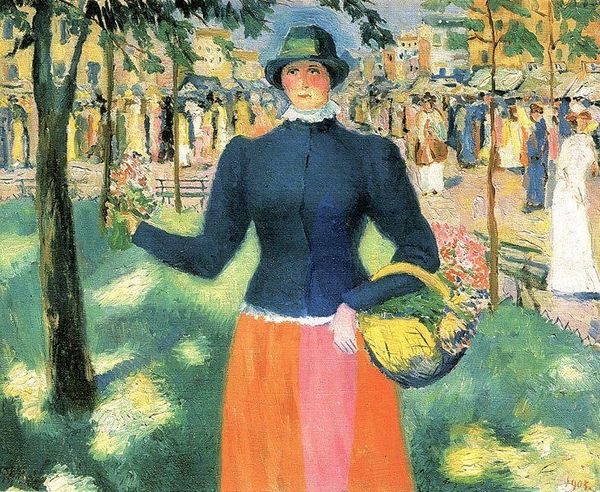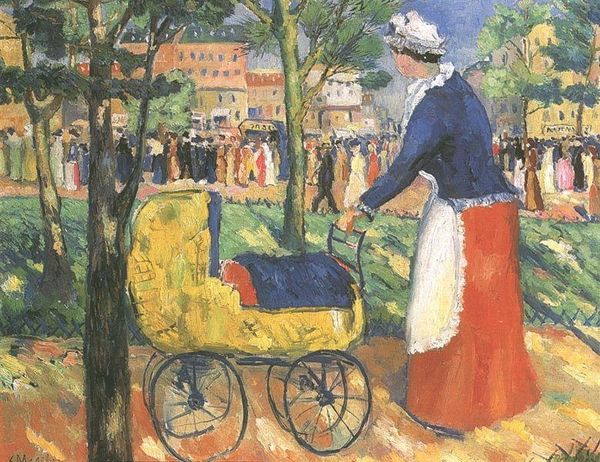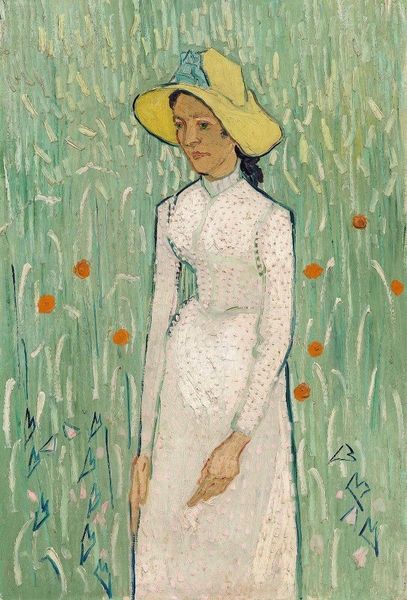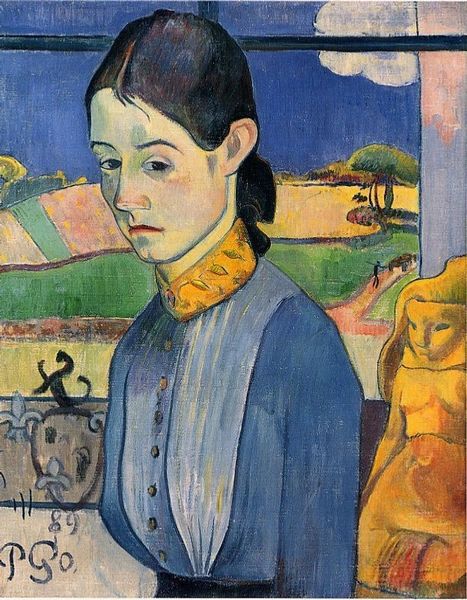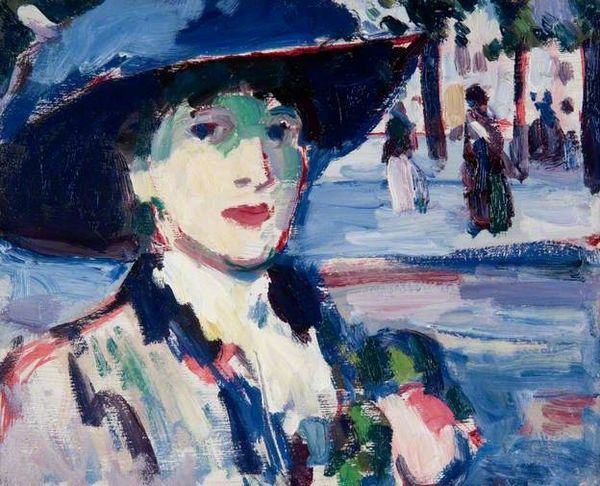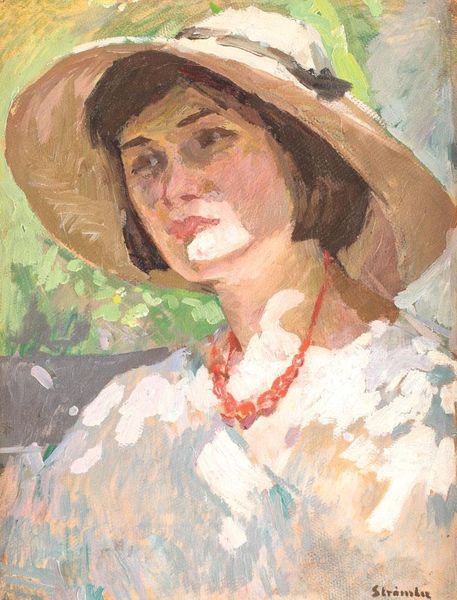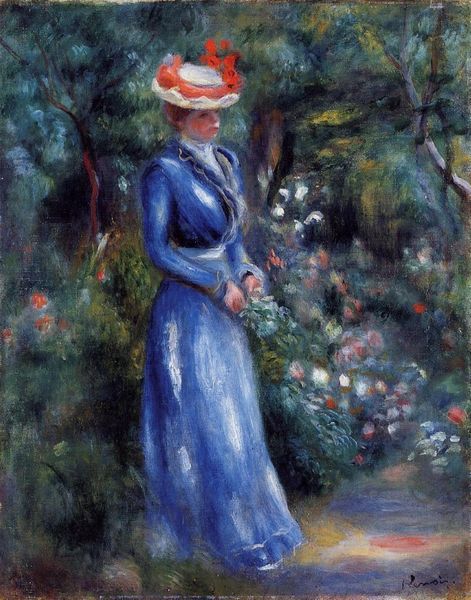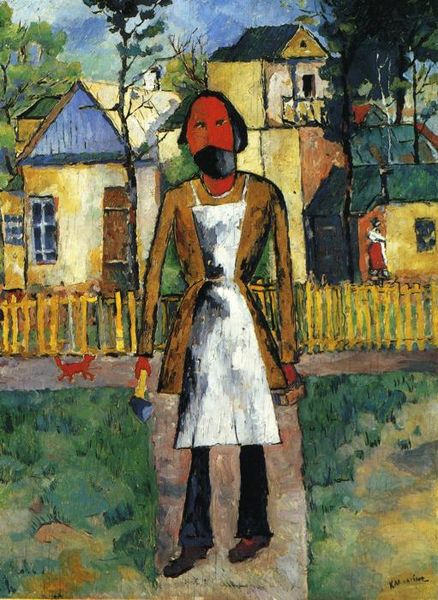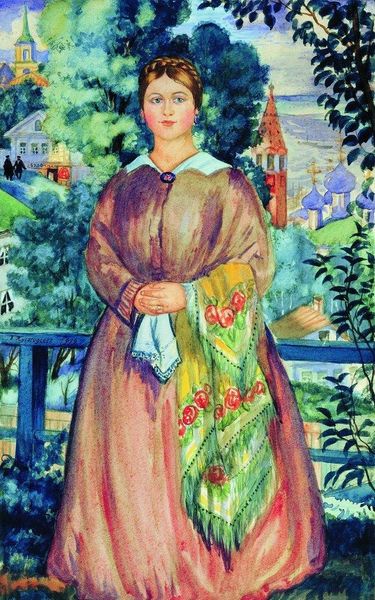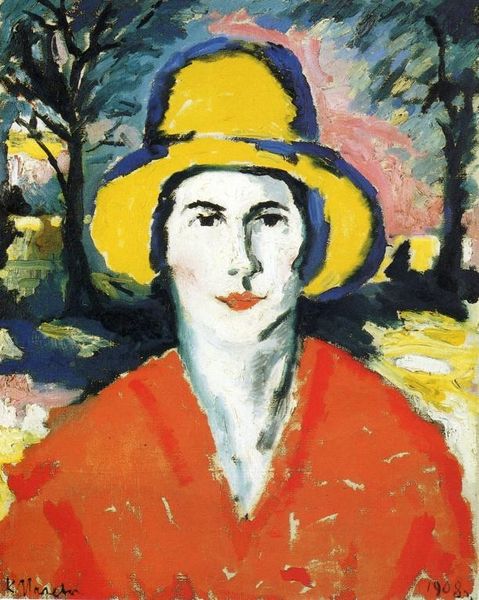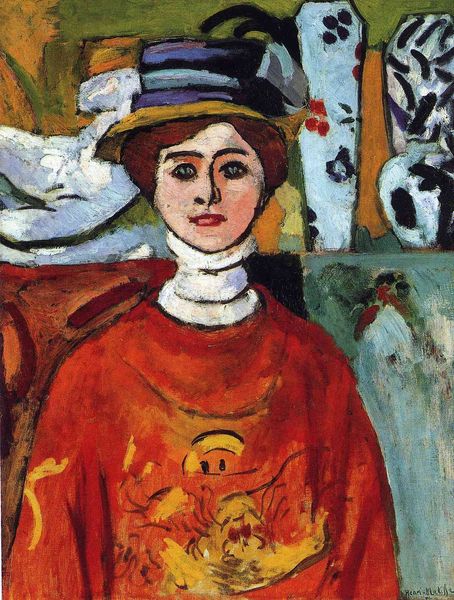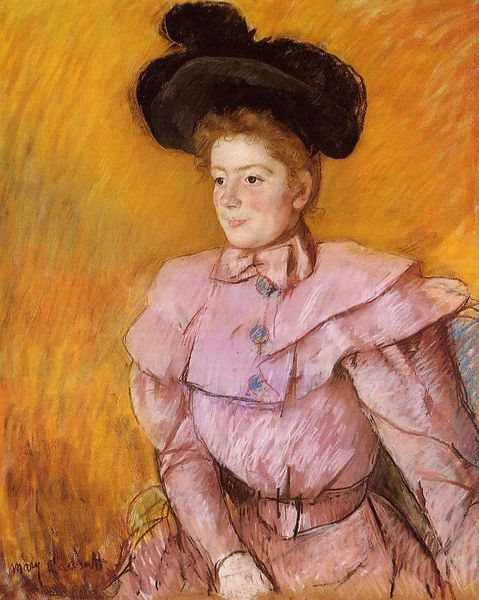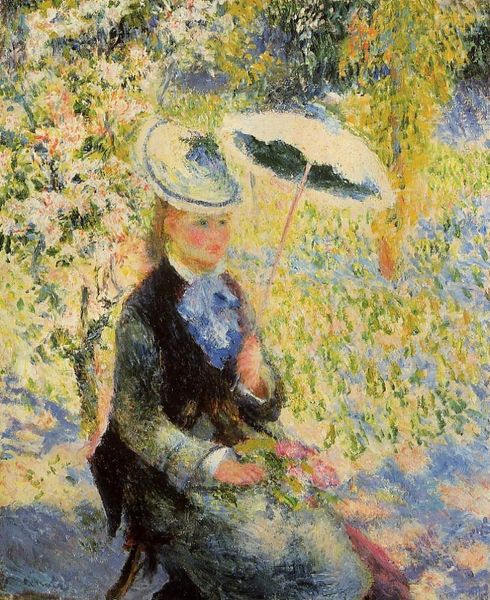
Dimensions: 80 x 100 cm
Copyright: Public domain
Editor: Here we have Kazimir Malevich's "Flowergirl," painted around 1930, it seems to be an oil painting. I'm struck by the juxtaposition of the almost impressionistic background with the more realistically rendered woman. How do you interpret this work? Curator: It’s fascinating, isn’t it? Especially when you consider the context. Malevich, famous for his Suprematist abstractions, created this during the Stalinist era, a period of intense ideological pressure in the Soviet Union. Art was expected to be representational and serve the state. Do you notice how this painting seemingly conforms to those expectations with its figuration? Editor: I do, but the almost detached, stiff figure contrasts sharply with the vibrant life suggested by the background figures and marketplace. Curator: Exactly. That tension is crucial. He’s navigating a complex political landscape. He had previously broken from traditional forms. This could be seen as an attempt to adapt while subtly resisting the dominant aesthetic of Socialist Realism. How does the 'Flowergirl' then operate as propaganda and simultaneously maintain its own integrity as art? Editor: So, it's less about simply depicting a flower girl, and more about Malevich navigating the shifting expectations of the art world under Stalin? The seemingly simple painting is steeped in so much more! Curator: Precisely. It becomes a commentary on the artist’s role and freedom, or lack thereof, within a totalitarian regime. And a statement of survival as an artist! Editor: That reframes my entire understanding of the piece. I initially just saw a simple scene. Thank you! Curator: Indeed, understanding the sociopolitical conditions makes this seemingly simple painting powerfully complex.
Comments
No comments
Be the first to comment and join the conversation on the ultimate creative platform.
